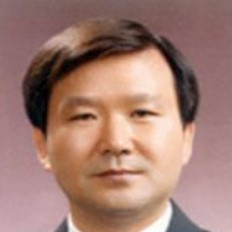Surface Modification of Metallic Materials for Wear and Fatigue
A special issue of Metals (ISSN 2075-4701). This special issue belongs to the section "Metal Failure Analysis".
Deadline for manuscript submissions: closed (31 May 2022) | Viewed by 13720
Special Issue Editors
Interests: wear; friction; fatigue; rolling contact fatigue strength; surface engineering/technology; surface modification; UNSM (ultrasonic nanocrystal surface modification); SCC (stress corrosion cracking) ASME Code Case for Nuclear Power Engineering; additive manufacturing
Special Issues, Collections and Topics in MDPI journals
Interests: additive manufacturing; surface engineering; laser remelting; finite element (FE) simulations; mechanical and metallurgical characterization; heat treatment
Special Issues, Collections and Topics in MDPI journals
Special Issue Information
Dear Colleagues,
The wear and fatigue performance of components in a system determine the service life and reliability of the system. Surface modification of the components is an innovative approach to improve the wear and fatigue performance. The change of wear and fatigue mechanism and performance by surface modification is very interesting and beneficial for academy and industry. This Special Issue on Surface Modification of Metallic Materials for Wear and Fatigue could help engineers and scientists to share their recent research and development and to find new ideas for future challenges. Friction and rolling contact fatigue/wear are also within the scope of this Issue. Articles investigating the phenomena associated with the surface modification of additively manufactured components are especially welcome.
Prof. Young-Sik Pyun
Prof. Do-Sik Shim
Guest Editors
Manuscript Submission Information
Manuscripts should be submitted online at www.mdpi.com by registering and logging in to this website. Once you are registered, click here to go to the submission form. Manuscripts can be submitted until the deadline. All submissions that pass pre-check are peer-reviewed. Accepted papers will be published continuously in the journal (as soon as accepted) and will be listed together on the special issue website. Research articles, review articles as well as short communications are invited. For planned papers, a title and short abstract (about 100 words) can be sent to the Editorial Office for announcement on this website.
Submitted manuscripts should not have been published previously, nor be under consideration for publication elsewhere (except conference proceedings papers). All manuscripts are thoroughly refereed through a single-blind peer-review process. A guide for authors and other relevant information for submission of manuscripts is available on the Instructions for Authors page. Metals is an international peer-reviewed open access monthly journal published by MDPI.
Please visit the Instructions for Authors page before submitting a manuscript. The Article Processing Charge (APC) for publication in this open access journal is 2600 CHF (Swiss Francs). Submitted papers should be well formatted and use good English. Authors may use MDPI's English editing service prior to publication or during author revisions.
Keywords
- Wear
- Fatigue
- Surface engineering/technology
- Surface modification
- Materials processing/engineering
- Additive manufacturing
- Coating






